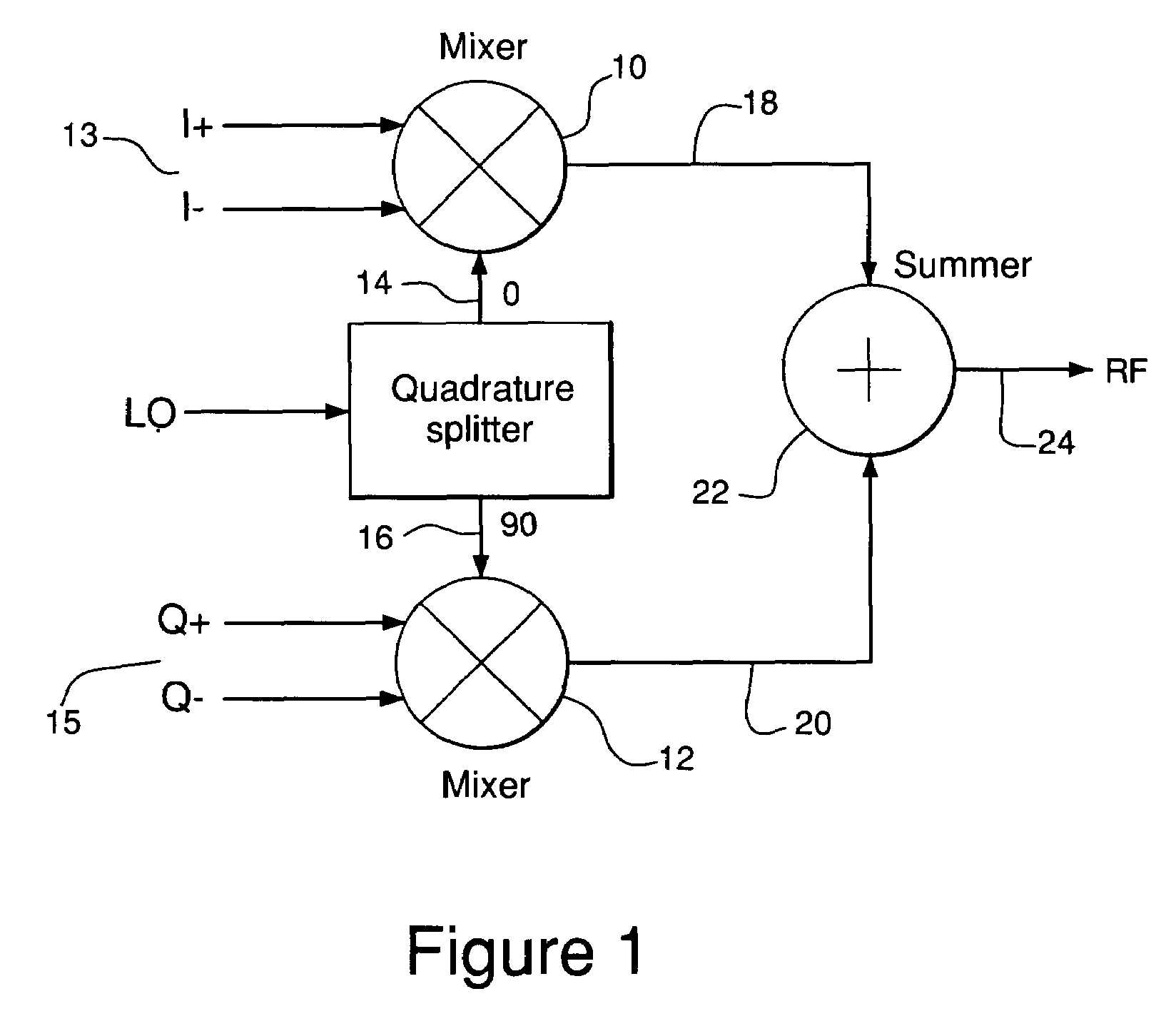Frequency conversion techniques using antiphase mixing
a technology of phase mixing and frequency conversion, applied in the direction of amplitude to angle modulation conversion, digital transmission, modulation, etc., can solve the problem of reducing the dynamic range available for the wanted baseband signal, generating spurious signals, and loss of signal-to-noise ratio (signal-to-noise ratio) from the da
- Summary
- Abstract
- Description
- Claims
- Application Information
AI Technical Summary
Benefits of technology
Problems solved by technology
Method used
Image
Examples
Embodiment Construction
[0018]According to one aspect, the invention provides apparatus for frequency upconversion of a signal comprising two components, the apparatus comprising two pairs of mixers, each pair adapted to act on a respective one of the components and, in each pair, one mixer adapted to upconvert the component assigned to that pair and the other mixer adapted to upconvert an inverted version of that component; a pair of subtractors, each subtractor adapted to combine by subtraction the outputs of a respective one of the pairs of mixers; and a combiner adapted to combine the outputs of the subtractors to produce an upconverted version of the signal.
[0019]The invention also consists in a method of frequency upconversion of an input signal comprising two components, the method comprising a first upconverting step comprising mixing one of the components with a conversion signal to produce a first upconverted signal and mixing an inverted version of that component with the conversion signal to pr...
PUM
 Login to View More
Login to View More Abstract
Description
Claims
Application Information
 Login to View More
Login to View More - R&D
- Intellectual Property
- Life Sciences
- Materials
- Tech Scout
- Unparalleled Data Quality
- Higher Quality Content
- 60% Fewer Hallucinations
Browse by: Latest US Patents, China's latest patents, Technical Efficacy Thesaurus, Application Domain, Technology Topic, Popular Technical Reports.
© 2025 PatSnap. All rights reserved.Legal|Privacy policy|Modern Slavery Act Transparency Statement|Sitemap|About US| Contact US: help@patsnap.com



